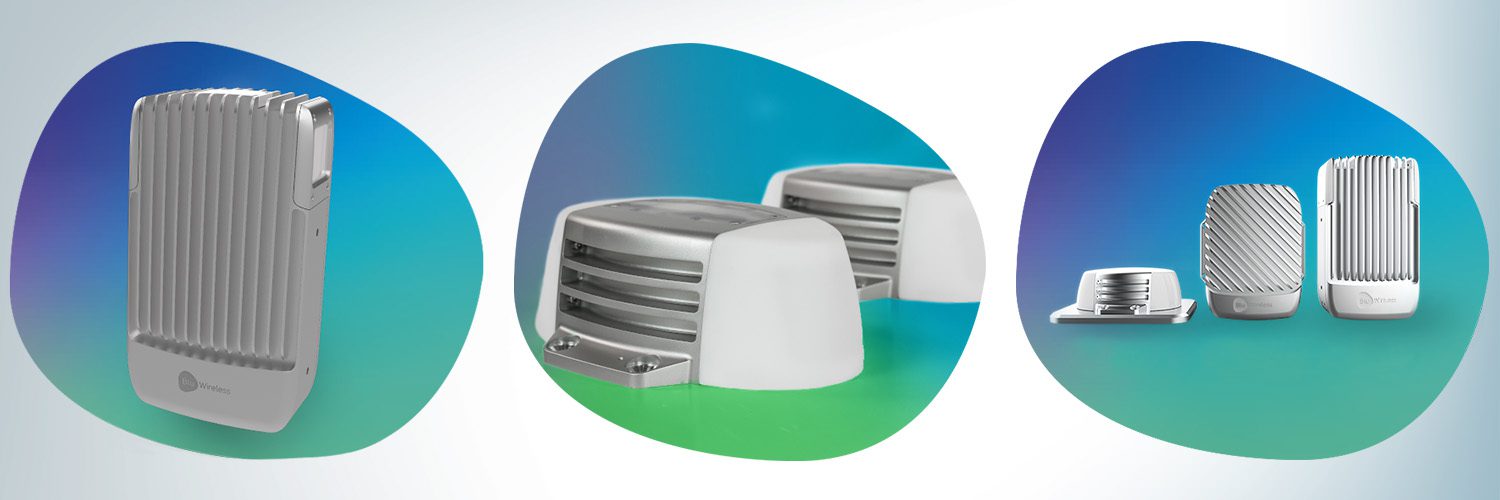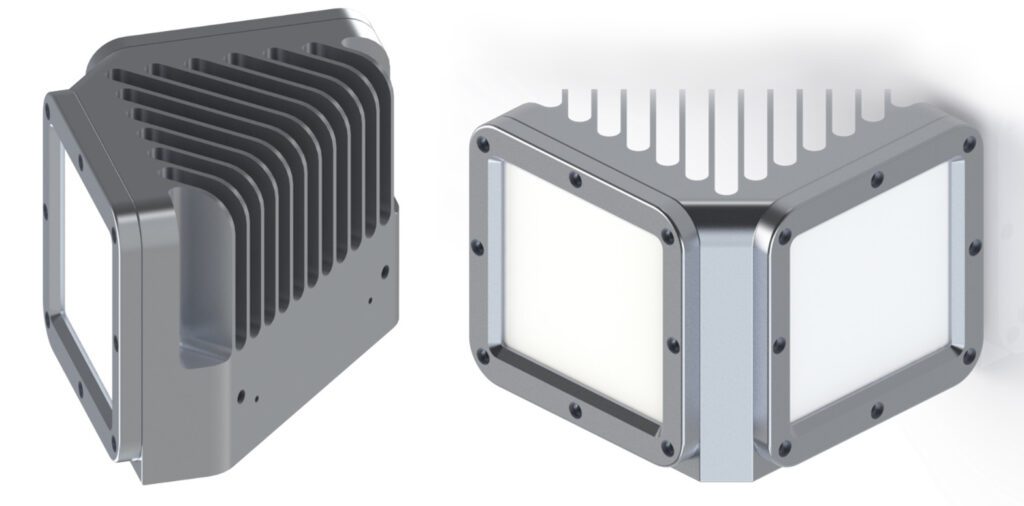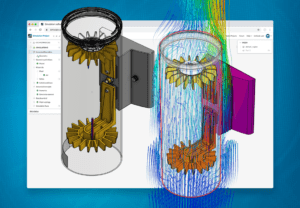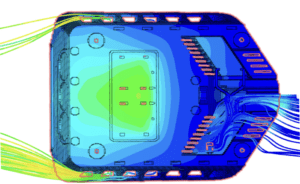
Transforming global connectivity infrastructure, Blu Wireless is a pioneer in mmWave technology and communications, and a leader in wireless networking equipment for multi-gigabit connectivity. Blu Wireless helps its partners and customers harness the power of multi-gigabit connectivity with their high-performance, scalable, and flexible 5G mmWave equipment and apply it to complex environments in defense, high-speed transport, cellular backhaul, and smart cities.
In the rapidly evolving world of wireless communication, the demand for cutting-edge and robust technologies is incessant. Enter Blu Wireless, a specialist in millimeter-wave (mmWave) technology. With a dedicated team of 75 staff and a global customer base, Blu Wireless is leading the industry, bridging the gap between innovative technology and its diverse applications.
Blu Wireless operates across four main industries:
Key members of the Blu Wireless team, like mechanical engineer Abhinav, play vital roles in the product design. Recently, they took over the design from a third-party design house, highlighting the company’s commitment to in-house expertise and developing robust R&D capabilities. Abhinav works in close collaboration with electronics board engineers, focusing on electronic board design with optimal cooling performance.
SimScale plays an integral role in the simulation stage of our design process at Blu Wireless. As recent users of SimScale, we have utilized the tool in one of our latest projects. We conducted a thermal performance analysis of the components designed for our application, and the results were instrumental in optimizing its design.

Abhinav Kuchipudi
Mechanical Engineer at Blu Wireless
Blu Wireless places a premium on utilizing advanced engineering simulation tools. The team has a well-developed workflow from CAD tools such as SolidWorks and Rhino into SimScale for CFD and FEA analysis. Prior to employing SimScale, they were accustomed to conducting thermal analyses using SolidWorks simulation and have had experience with Finite Element Analysis (FEA) through the Abaqus software. Bringing R&D back in-house necessitated a move to SimScale, with its cloud-native features, collaboration tools, and in-platform technical support.

During one of the recent projects for a new product, the team undertook a thermal analysis of a new electronics housing, emphasizing natural convection and passive cooling of an enclosure. This project underscored the significance of using advanced tools to ensure product efficiency aligned with a robust and faster go-to-market strategy for the new product.
We’ve had really incredible support from SimScale from day one, the technical support is amazing and this helped us bring back R&D in-house more quickly and confidently.

Abhinav
Mechanical Engineer at Blu Wireless
Blu Wireless is breaking new ground with its recently launched product, PhantomBlu, which offers omnidirectional coverage. This high-stakes project has passed its conceptual phase and is currently in the final stages of development with first orders being shipped Q1 of 2024. To ensure the product performs optimally under extreme conditions, the team is employing Computational Fluid Dynamics (CFD) simulations using SimScale.

The primary focus of using CFD is to simulate and optimize thermal performance. CFD models aim to predict temperature profiles under varying scenarios, specifically targeting critical areas such as printed circuit boards (PCBs), thermal paste, and thermal pads. The end goal is to optimize the design of the heat sink and airflow paths, ensuring that the heat dissipation mechanism is both effective and energy efficient. The chassis is made entirely of aluminum to facilitate heat dissipation. Passive cooling is a stringent requirement, as active cooling mechanisms like fans are not permissible due to the risk of contamination.
The device is intended to operate within a heat load range of 85-100 watts, depending on operational parameters. The maximum allowable temperature is pegged at 75 degrees Celsius at an ambient temperature of 40 degrees. Currently, simulations indicate radio temperatures of about 70 degrees, suggesting that the heat sink could be modified for more efficient convection through the fins. While cost is a less significant issue, the objective is to optimize the weight of the device without compromising its thermal performance. Special seals and the right amount of torque in screws are included in the design to meet an IP67 rating, thereby preventing dust infiltration and these aspects are also modeled using SimScale.
In the initial use case, our primary objective was to analyze the performance of the processor in extreme conditions, where the sole mode of heat dissipation is natural convection with no air flow. Initially, we designed the thermal management system based on hand calculations to obtain a rough estimate of the sizing. The design principle revolved around enhancing the thermal pathways to facilitate efficient heat dissipation from the processor. Subsequently, we incorporated the simulation tool in the following step, subjecting the initial design to rigorous simulation across multiple test scenarios. We meticulously analyzed the thermal contour of the component, paying close attention to temperature data at various probe points. The image below illustrates the thermal contour of the analyzed component.

Abhinav
Mechanical Engineer at Blu Wireless

At the prototyping stage, better-performing designs are 3D printed and physically tested. Physical tests are conducted in-house to verify the simulation results, including hand calculations for further validation. The number of physical tests has reduced significantly as simulation ability has increased. Blu Wireless employs advanced features in SimScale like the immersed boundary mesh in the CFD simulations. This approach significantly reduces simulation time—by about a factor of 10—in comparison to traditional methods, measured in core hour usage, and is a result of more efficient meshing algorithms that obviate the need for CAD cleanup.
Finite Element Analysis (FEA) will be used on this project for physical drop/impact tests. Vibration tests are planned to ensure the product meets all operational and safety requirements as the products are often used in rail, off-road, and extreme environments. The advantage of using SimScale is all the mentioned analysis types are in a single platform using a single CAD model. The team at Blu Wireless aims to continuously fine-tune the thermal performance of its new dual-radio head product. The current stage of R&D has shown promising results and has hastened the time taken to bring the new product to market.
Our team is now planning on using other features in SimScale such as joule heating and more structural FEA analysis. Previously we were using a desktop simulation tool but could not be confident in its results. It also took too long to run simulations and would freeze up our computing resources. Running design simulations sequentially was extremely limiting and stopped us from exploring more design options. Since moving to SimScale the simulation runs are much faster as many can run in parallel in the cloud, keeping our computers free to continue with heavy CAD work. The results are also more indicative of what we would expect and we have reduced the number of physical prototypes in our product development process.

Abhinav
Mechanical Engineer at Blu Wireless



Sign up for SimScale
and start simulating now